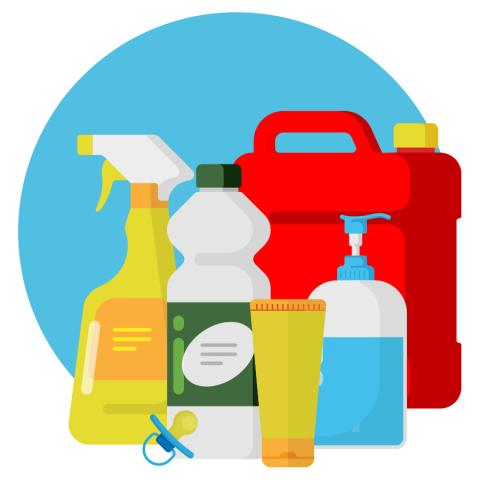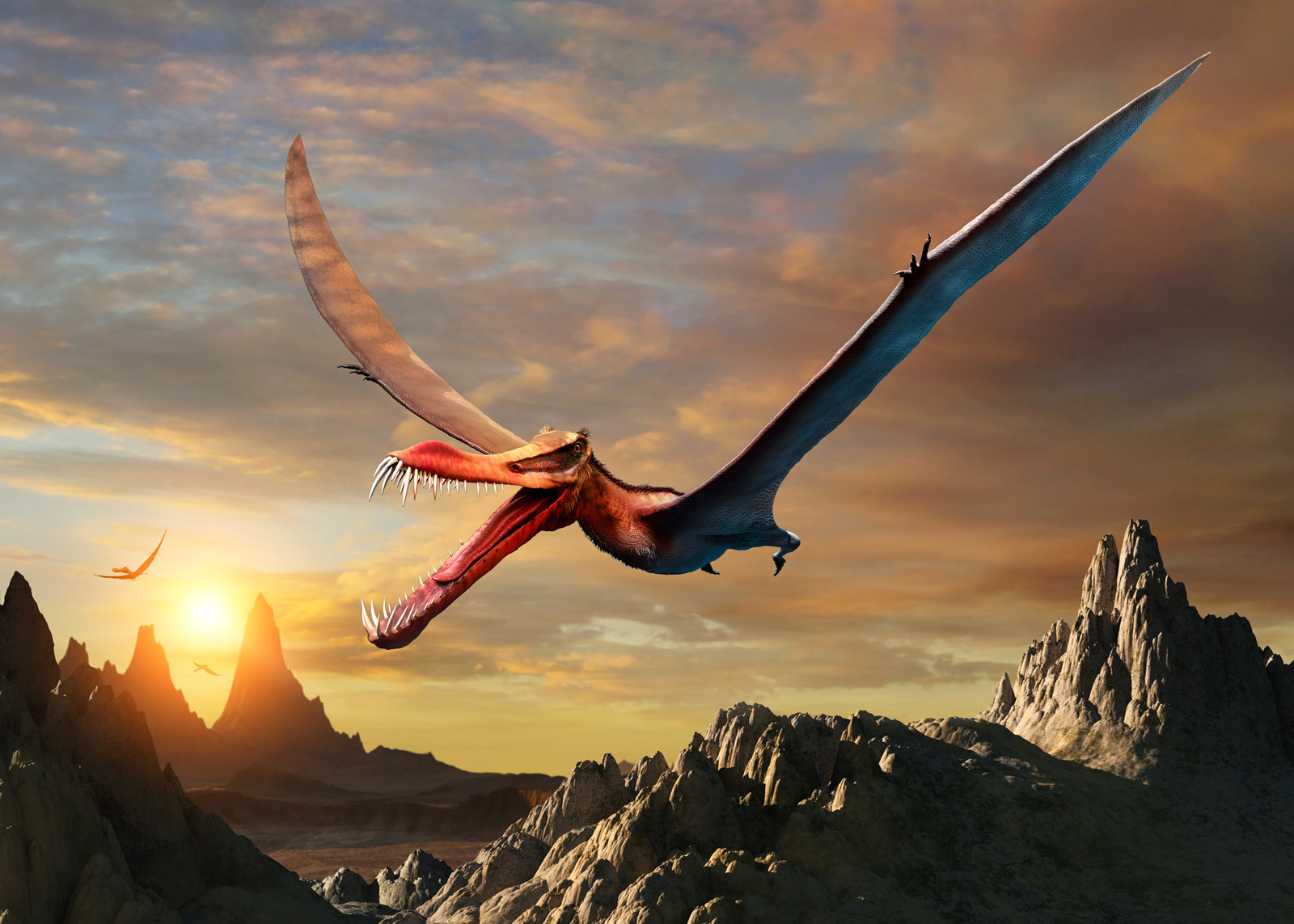Research Highlights
Poor nutrition and lack of exercise have long been known as contributors to obesity. Thanks to a recent Baylor study, significant evidence has emerged regarding the potential effects of some chemical compounds to trigger lipid-related diseases.
The study, led by Dr. Ramon Lavado, assistant professor of environmental science, was published in the international journal Toxicology and Applied Pharmacology.
Until recently, scientists thought diseases such as obesity and fatty liver resulted from anomalies in the metabolism of lipids triggered by excessive energy intake, fat consumption and lack of physical activity. However, the Baylor study highlights the presence of obesogens — specific chemical compounds found to disrupt normal metabolic processes — in a variety of consumer products. Exposure to these obesogens, particularly in early development, were found to increase susceptibility to weight gain across the lifespan.
“Previous studies have provided strong evidence linking some hormone-like compounds to obesity in humans, but this is the first study that showed a cellular and metabolic effect on human cells exposed directly to those compounds,” Lavado said.
Lavado’s team has been conducting experiments to determine whether obesogens promoted a dysregulation of lipid profiles in the human liver.
As of the year 2000, there were an estimated 100,000 commercially available chemicals around the world. Two decades later, the Baylor study found there to be approximately 350,000 chemicals available.
The three primary obesogens considered in the study were PFCs (Perfluorinated compounds), Phthalates and pesticides.
“PFCs are used in non-sticking surfaces and can be found in food containers (like pizza boxes), cookware, cosmetics, hygiene products and medical supplies,” Lavado said. “Phthalates are used in plastics and can be found in plastic containers, vinyl flooring, food packaging (plastic films), teething toys, personal care products, paints, cleaning supplies, adhesives and sports equipment.”
The team drew from the fields of metabolomics and molecular toxicology to investigate whether the proportion of lipids responded to exposure to environmental obesogens, and if so, to what extent the lipid profile changed. Additionally, they used fluorescence microscopy to investigate whether environmentally relevant concentrations of the tested compounds had the ability to induce fat accumulation in liver tissue.
Marco Franco is a Baylor environmental science doctoral candidate and a member of Lavado’s research group. He said study results indicated that the production of diglycerides and triglycerides increased significantly while other less harmful lipids were found in smaller proportions. The group also found that those effects were observed in cells exposed to chemical concentrations that are commonly found in the environment and at levels to which people are constantly exposed.
Lavado also said this study is among the few that report molecular and physical changes at the cellular level with the measurability of specific types of lipids that emerge as a result of chemical exposure.
“In the case of lipid profile alterations, the idea that chemical compounds may trigger and/or contribute to the development of lipid-related diseases deserves extensive research in the future,” Lavado said.
Additionally, Lavado said the study results strongly support the use of animal alternatives, which have more human relevance but lack toxicological data. Nonetheless, they can be a valuable tool in the characterization of health effects caused by chemicals to which humans are often exposed.
Called to Action
By Randy Fiedler
Brooke Morris, BS ’16, and Kaitlin Murtha — biology PhD students at Baylor — spent their extended spring break helping medical teams dealing with COVID-19 in one of the nation’s hotspots for the virus.
The two women responded to a plea from officials of the virology research lab at the University of Washington. The need to test the large number of possible cases of COVID-19 had quickly exceeded the small lab’s capacity.
“They sent out a text saying, ‘Hey, we’re really short-staffed and need to hire people as soon as possible,’” Morris said. The two women replied that they were interested, and within two hours, lab officials arranged to provide them with transportation, housing, meals and a small amount of pay over a two-week period.
“The first day in the lab was controlled chaos,” Murtha said. “We were put straight to work, working about eight hours every day on the night shift.”
The two women, who had experience working with RNA and DNA at Baylor, were given the biological samples of persons suspected of having COVID-19 to prepare those samples for final testing.
“The samples came in large tubes filled with liquid that is important for maintaining the integrity of the virus,” Murtha said. “We would move those samples into smaller vials and organize them, assigning them to one of the four tiers of urgency they created to determine which samples needed testing first.”
Murtha estimates that she and Morris each handled about 500 samples a day.
Morris stayed in Seattle an additional two weeks after Murtha returned to Waco, where Morris helped prepare samples for serology testing.
“That’s where they test for antibodies to see if people have actually had the infection but never knew it,” she said.
Both women are glad they volunteered to help.
“The experience of working in a medical laboratory was eye-opening, and I can take that experience into any new adventure in my future,” Morris said.
“We were immediately helping someone, and that was a nice feeling,” Murtha said. “And it created a new perspective on our options as graduate students.”
Toothy Terror
International researchers led by Baylor scientist and geosciences doctoral candidate Megan L. Jacobs identified three new species of pterosaurs — giant flying reptiles of the Cretaceous period — in the Kem Kem beds, a geological group in eastern Morocco. The massive spikey-toothed reptiles once soared high above an ancient African river ecosystem that teemed with fish, crocodiles, turtles and other predatory dinosaurs.
“Pterosaur remains are very rare,” Jacobs said. “Most known [remains] come from Europe, South America and Asia. These new finds are very exciting and provide a window into the world of pterosaurs in Cretaceous Africa.”
The study, published in the journal Cretaceous Research, is helping to uncover the poorly known evolutionary history of Africa during the time of the dinosaurs. The discovery indicates that African pterosaurs were similar to those found on other continents.
According to Jacobs, the wingspan of the pterosaur could reach 10 to 13 feet with bones that were airy and paper-thin. “This allowed these awesome creatures to reach incredible size and still take flight and soar the skies,” Jacobs said.
Pterosaurs used a set of large, nail-sharp teeth to snatch fish while remaining in flight and were able to forage for hundreds of miles. Researchers suggest they were able to span the distance between South America and Africa in a way similar to modern migratory birds like condors and albatross.
Jacobs’ team identified the specimens from chunks of jaw and teeth found by fossil miners from a small village near Erfoud, Morocco. These villagers daily climb halfway up the side of the large escarpment of the Kem Kem beds to dig in the fossiliferous layers of coarse sand.
“They excavate everything from teeth to bones to almost complete skeletons,” Jacobs said. “They then sell their finds to dealers and scientists who conduct fieldwork. These pterosaur fragments are unique and can be identified easily — if you know what to look for.”
Anhanguera, one of the species identified by Jacobs’ team, was previously only found in Brazil. Another, Ornithocheirus had only been found in Britain and Central Asia.
According to Jacobs, this is the fifth find of toothed pterosaurs in the Kem Kem beds. The first was in the 1990s and the second was not until last year. The specimens will be part of an acquisition in a museum in Morocco.

